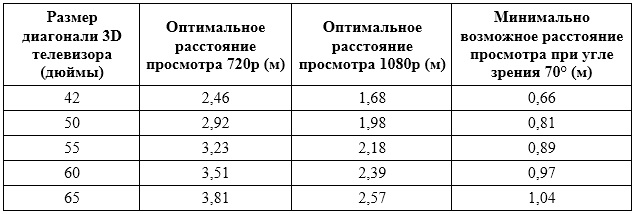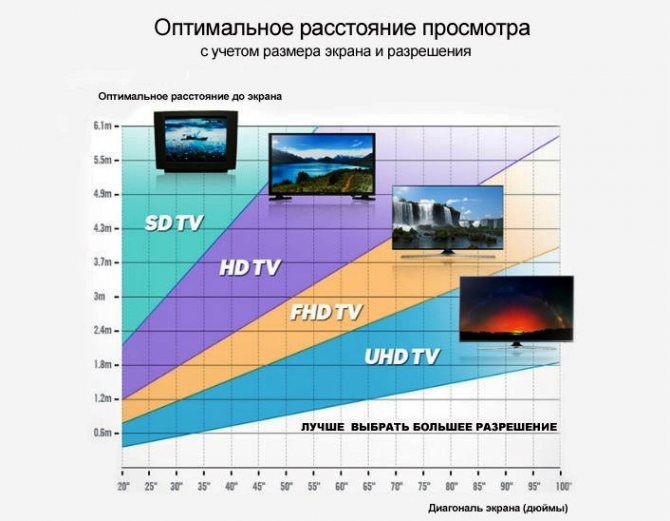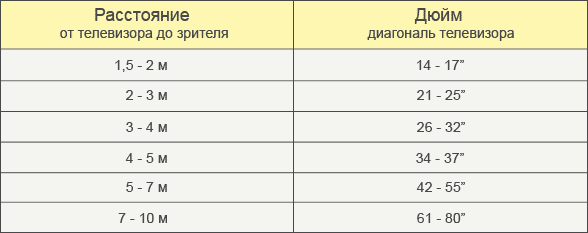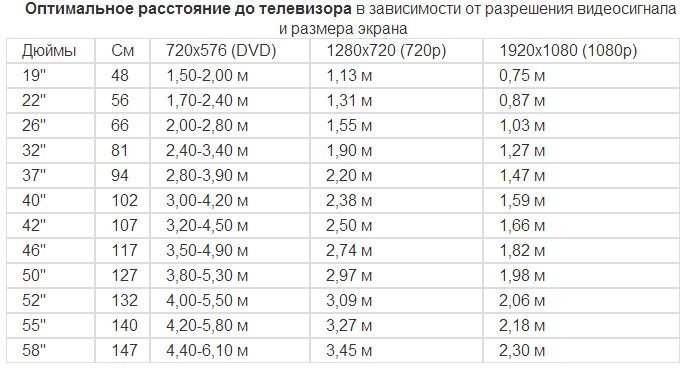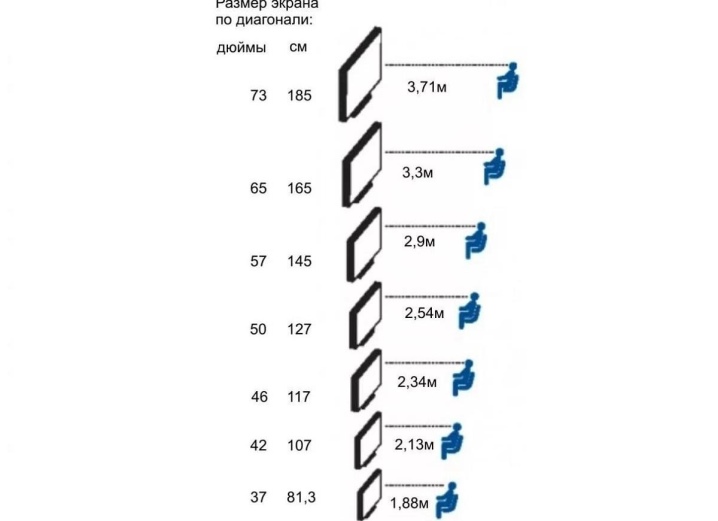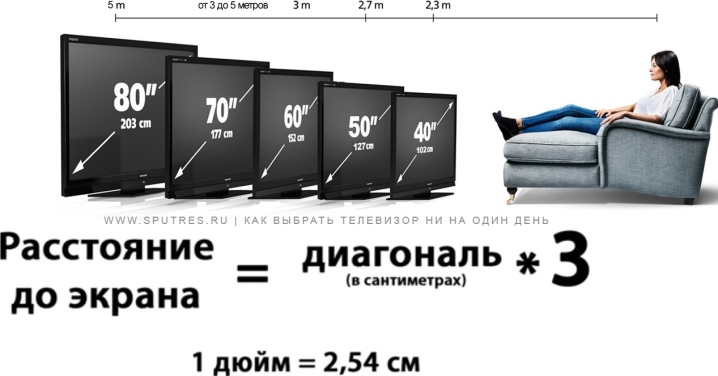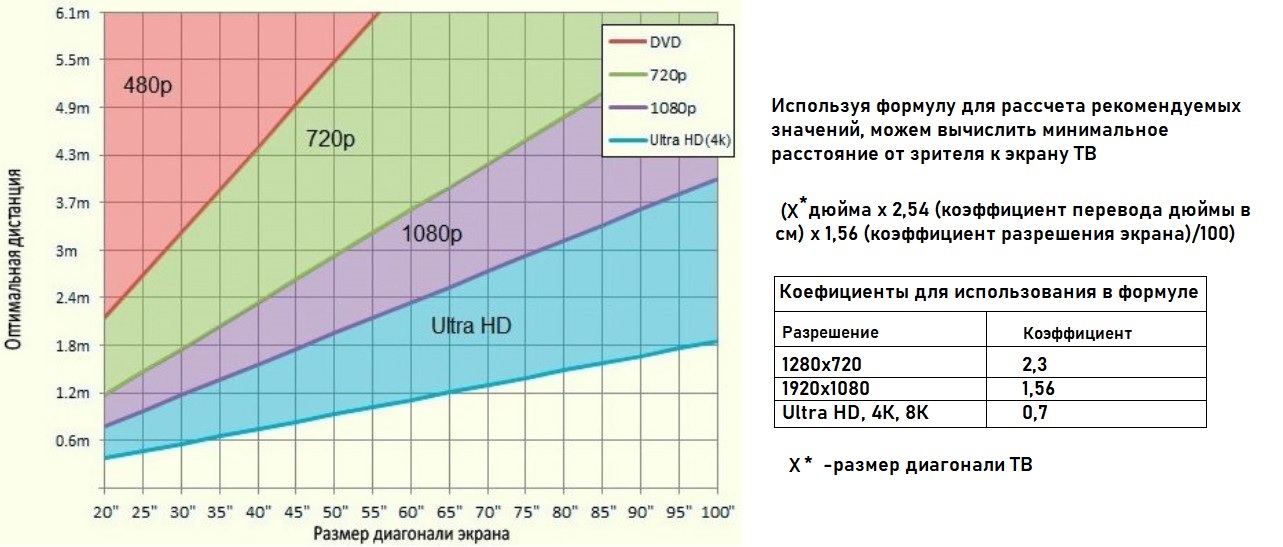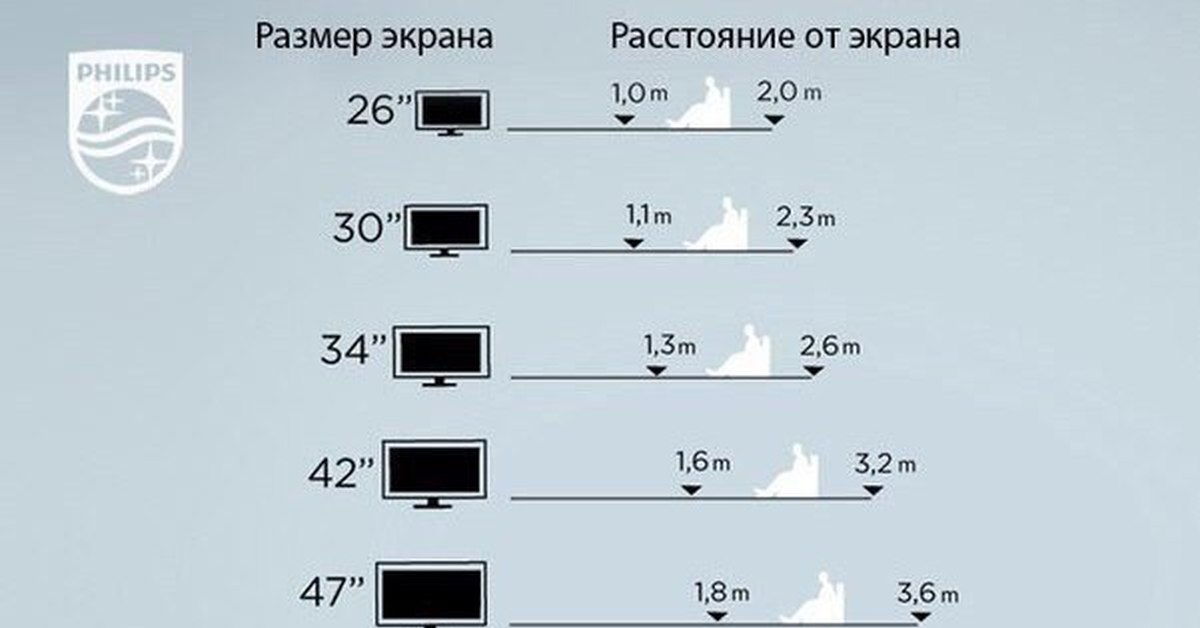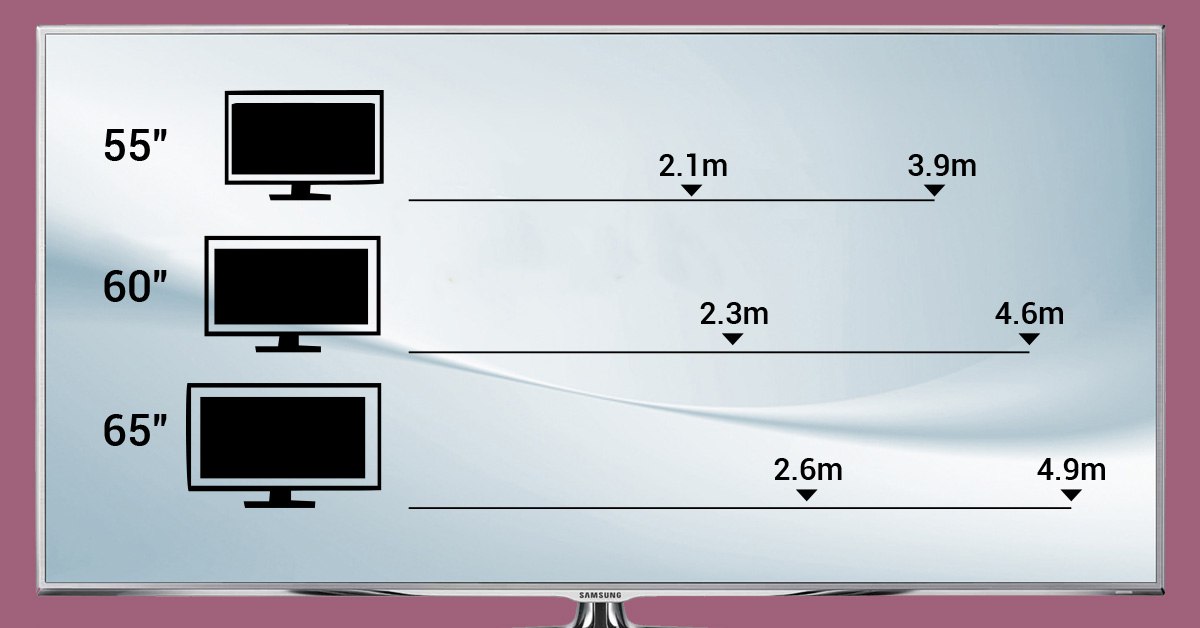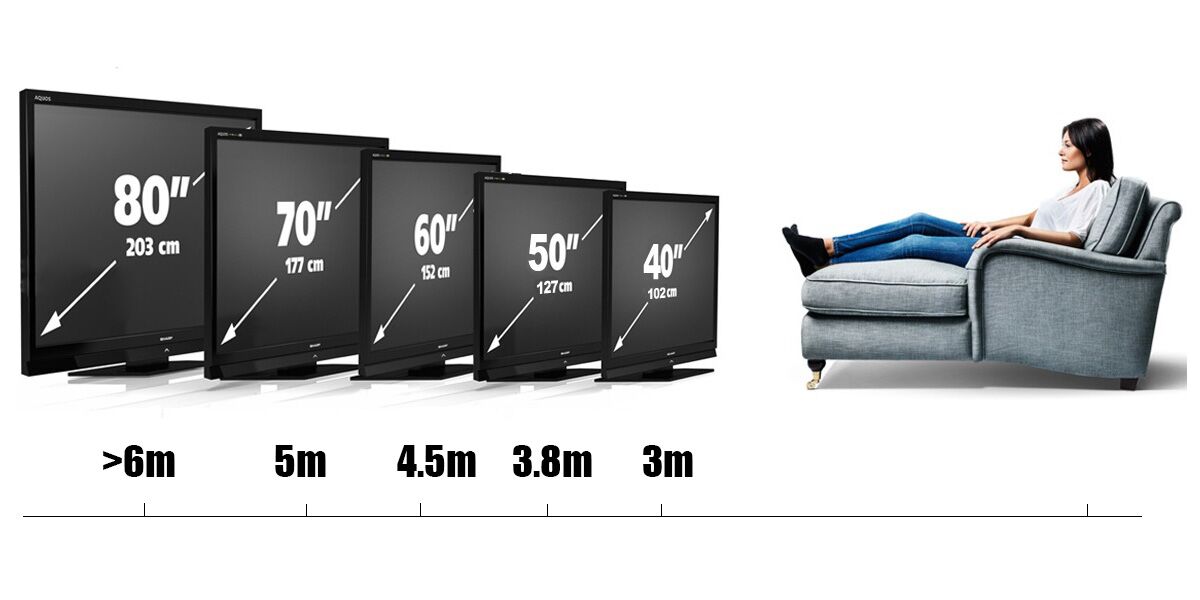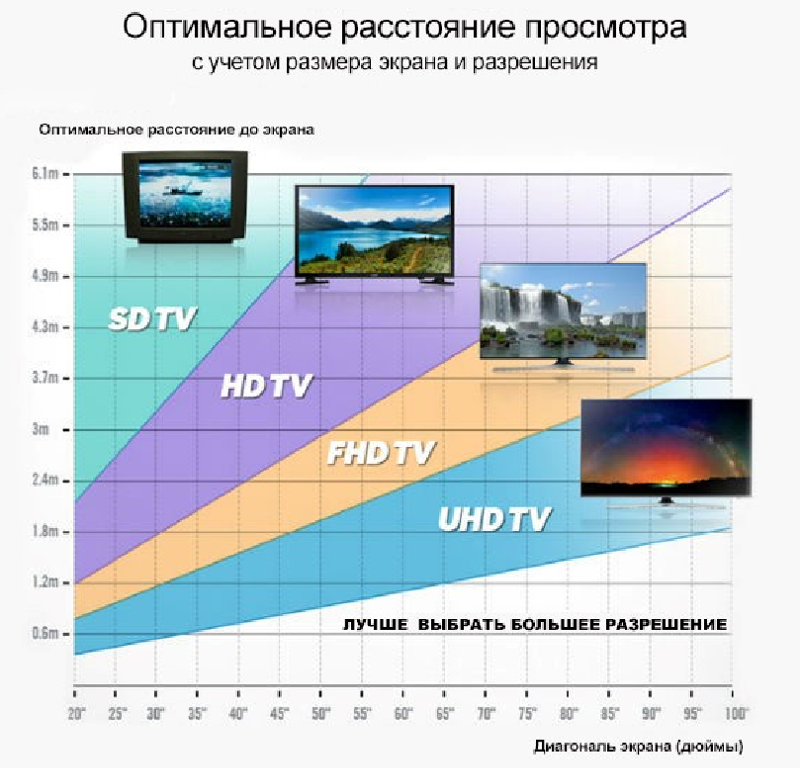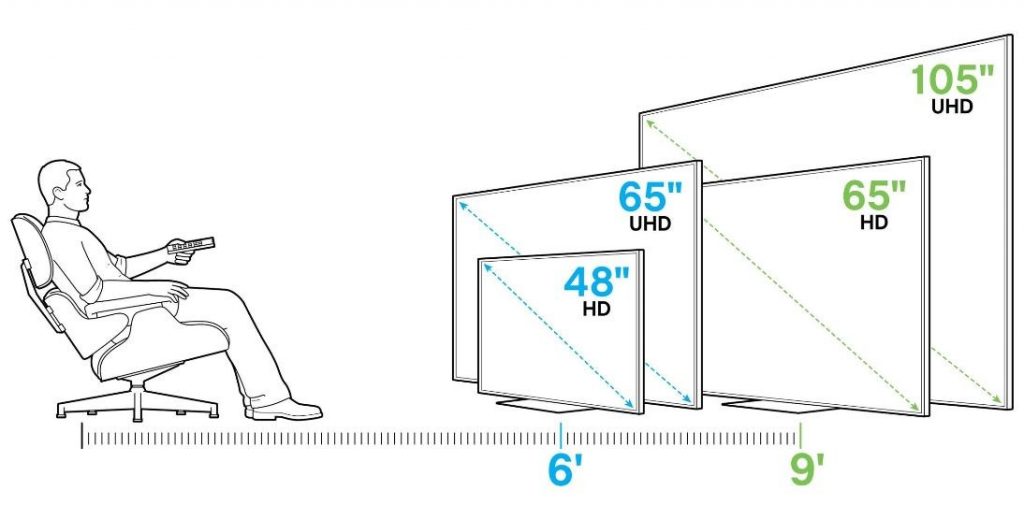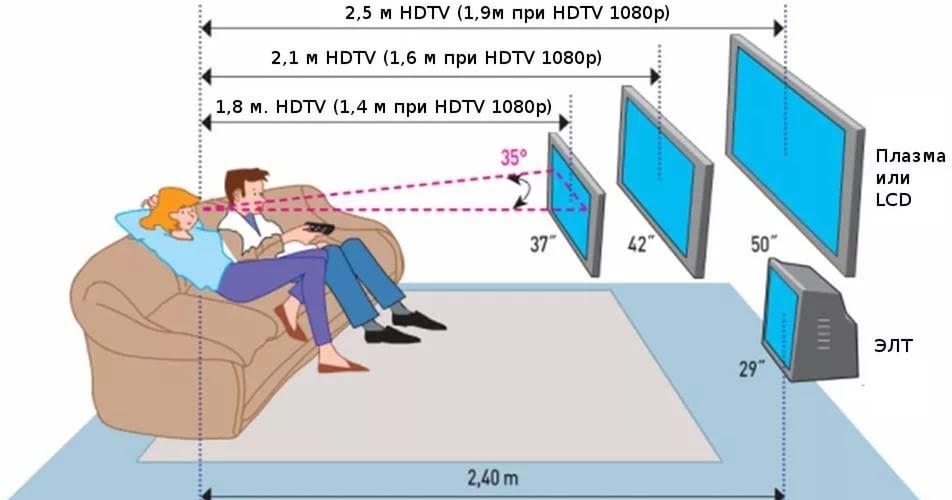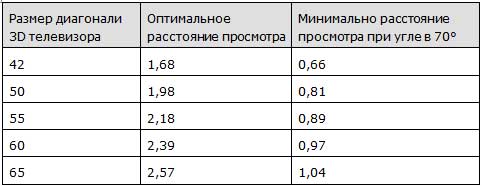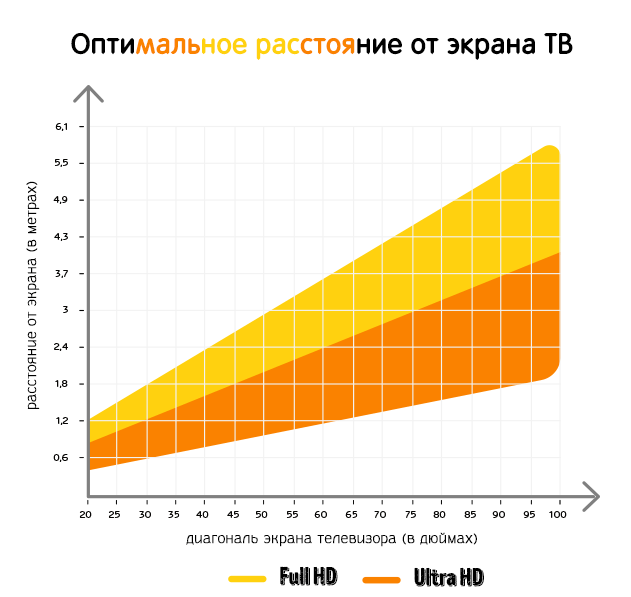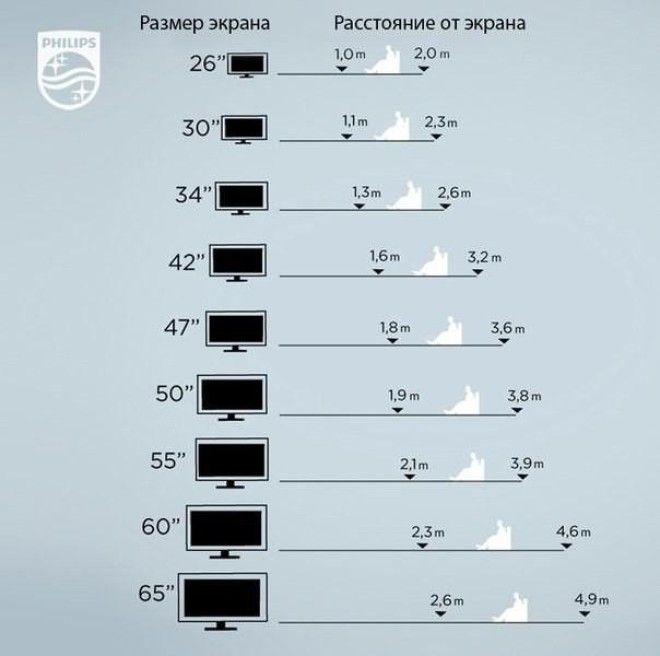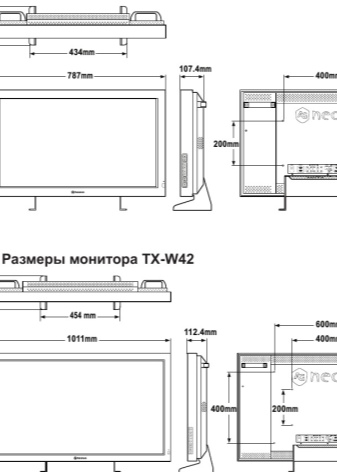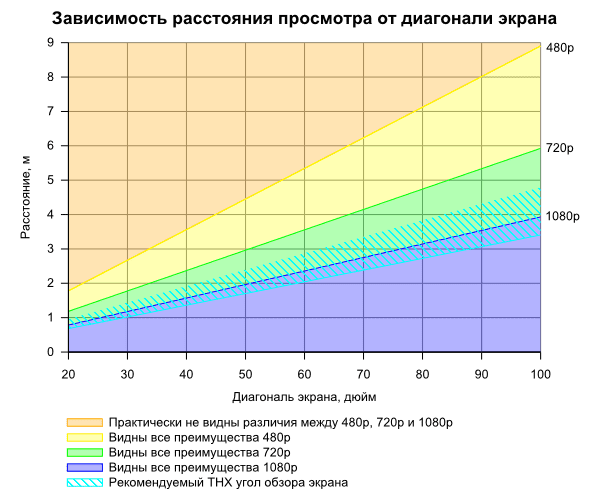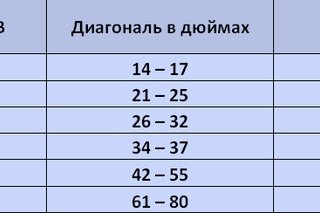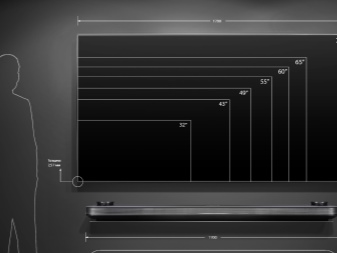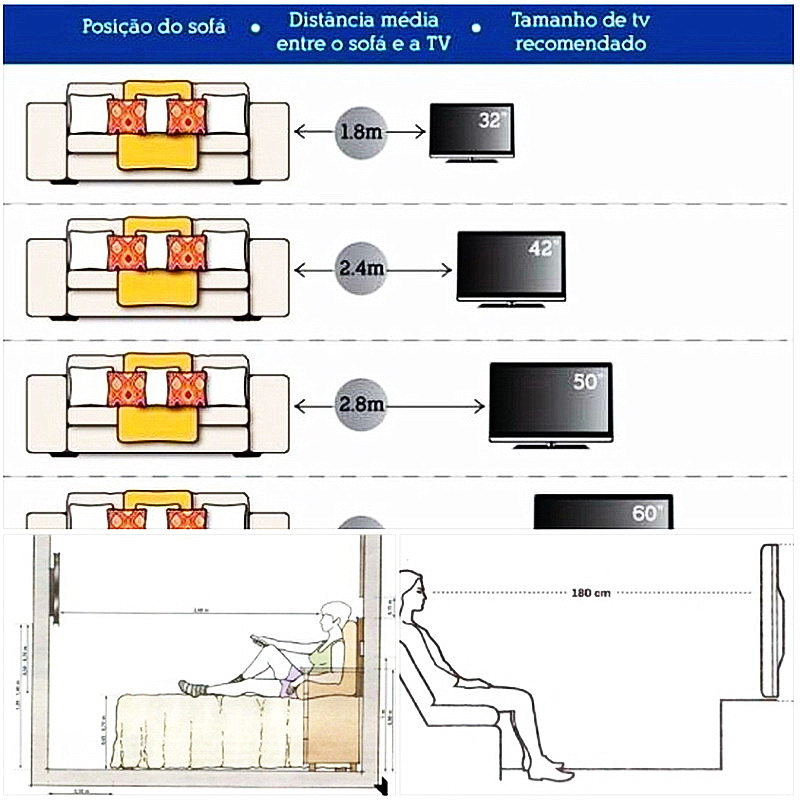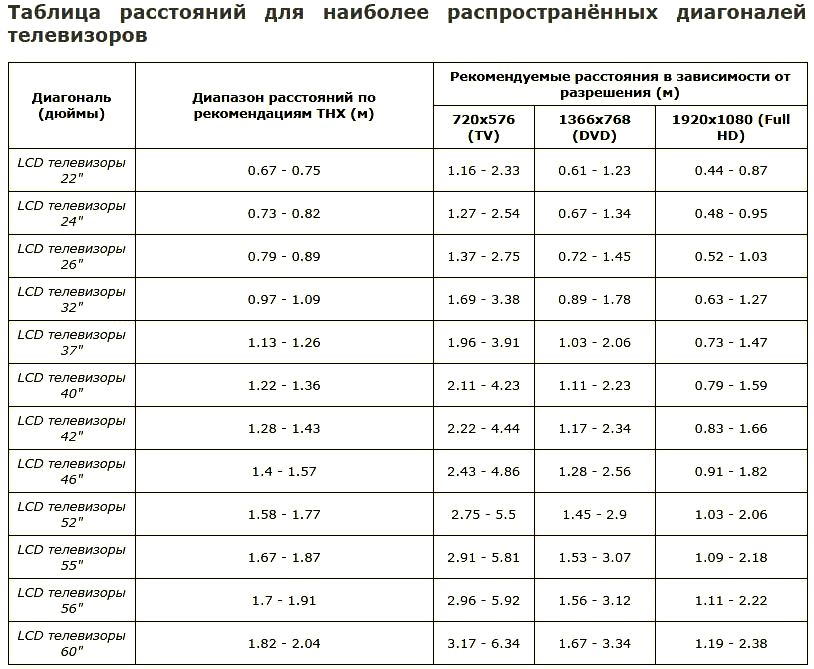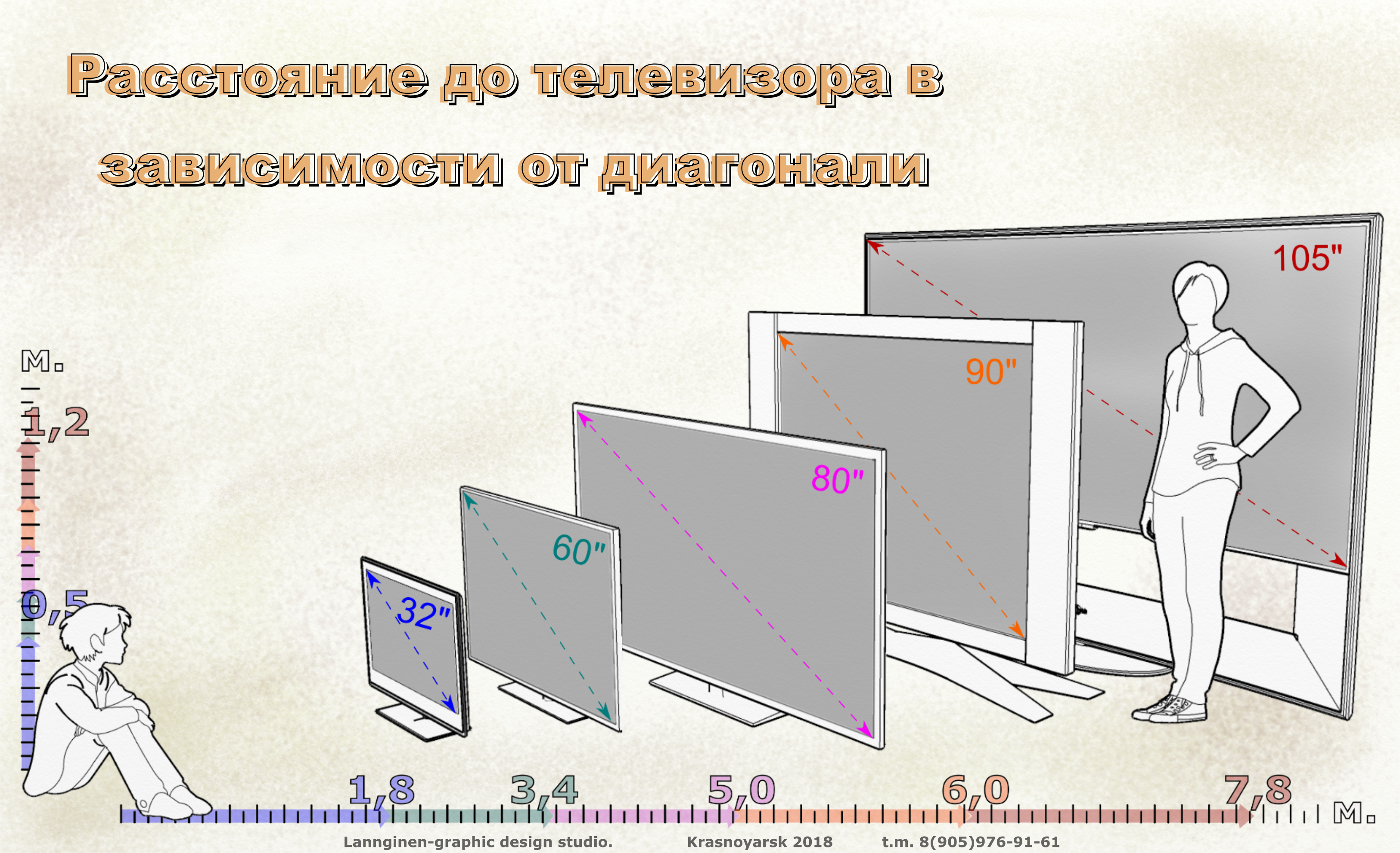How to choose?
To choose the right TV, you need to consider:
- protection from children, animals, mechanical damage;
- saving space in the room;
- the ability to view at a convenient and safe distance;
- area of the room.
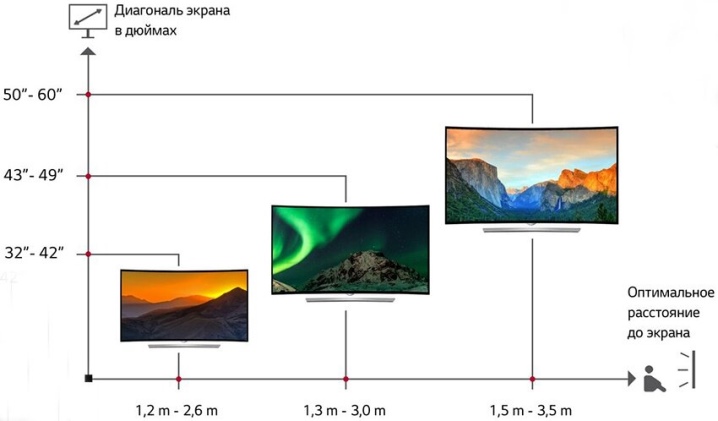
First of all, it is worth visually presenting various models in the room and assessing how convenient it will be to spend time watching the TV.
It is important to evaluate the viewing angle here. In most models, it is 178 degrees, which will allow the whole family to watch TV from different places in the room
If you hang the TV on the wall, you need to pay attention to the ability to tilt the model - this will make viewing more comfortable
The next step is to measure the distance from the intended location of the TV and compare it with the diagonal (you can do this using the table that was above).

Then everything depends on the room. If this is a living room, then it is better to install a larger device. In most cases, the living room is the largest room where everyone gathers in the evenings, and a huge TV is more comfortable than a small one. In the bedroom, it is more convenient to hang the TV on the wall, because they watch it lying on the bed. The diagonal size should be smaller than in the living room (22 to 32 inches). In a small kitchen, the device should not interfere with the preparation and consumption of food. Better to take a small TV with a low screen resolution.

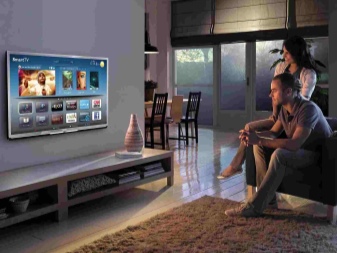
How to measure the diagonal?
Incorrect measurements can be a major obstacle to buying the perfect TV. Many users believe that to determine the diagonal, it is enough to take a tape measure and measure the distance from one corner of the panel to the opposite. That's just wrong. There is an easy way to check the size of your TV. You just need to determine the correct measurement points.
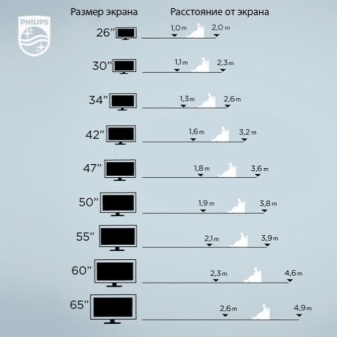

So, you can find out the diagonal of the TV if you measure the matrix between the lower right and upper left corners. The points should be located diagonally to each other. Before installing the panel, it is additionally worth measuring its depth. It is worth noting that curved matrices should be measured with an ordinary sewing centimeter.
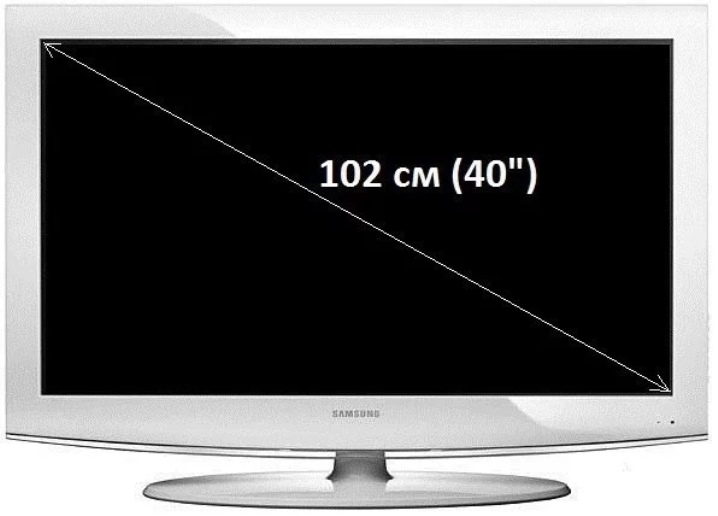
Rules for converting inches to centimeters
When choosing a TV, it is important not to be mistaken with the dimensions. The European metric system will help determine how many centimeters are in 1 inch
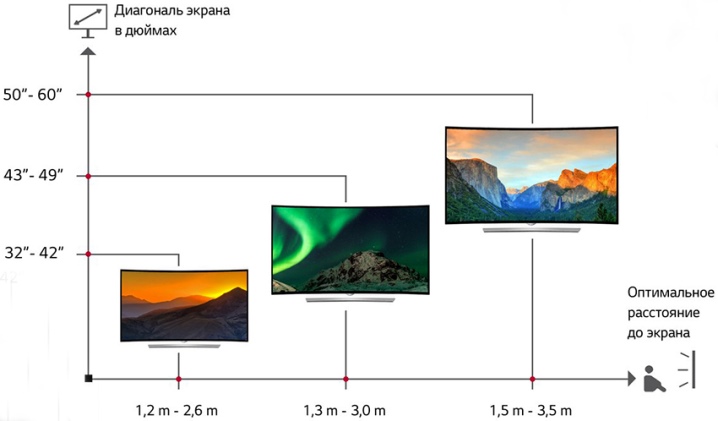
For example - calculating the size of a TV with a diagonal of 54 ". One inch is 2.54 centimeters. It is easy to understand the diagonal of the TV. It is enough to multiply 54 by 2.54. The result is 137.16 cm, which can be roughly rounded to 137 cm.

In the example, substitute any number of inches for "54". Such a simple formula will allow you to correctly translate one unit of measurement into another, more familiar one.
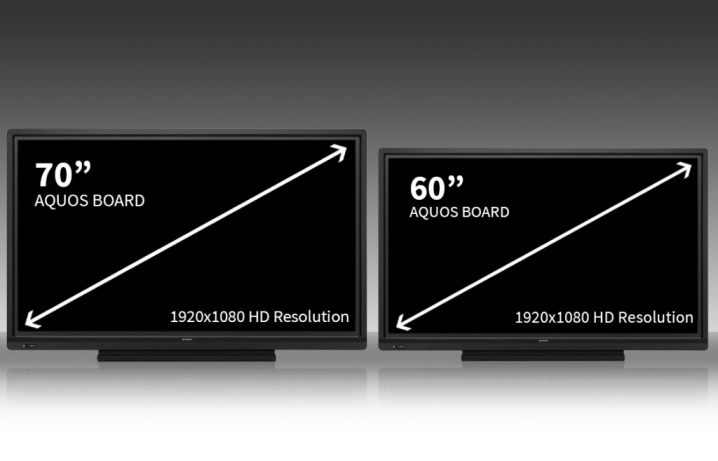
You can measure the TV with a tape measure, and calculate the number of inches (0.393 cm in 1 inch). For example, when measuring the result is 102 cm, this number is multiplied by 0.393 - and as a result the diagonal is 40 inches. It is enough to know the size in one unit of measurement to convert it to another. When measuring with a tape measure, do not grab the frames of the television panel.
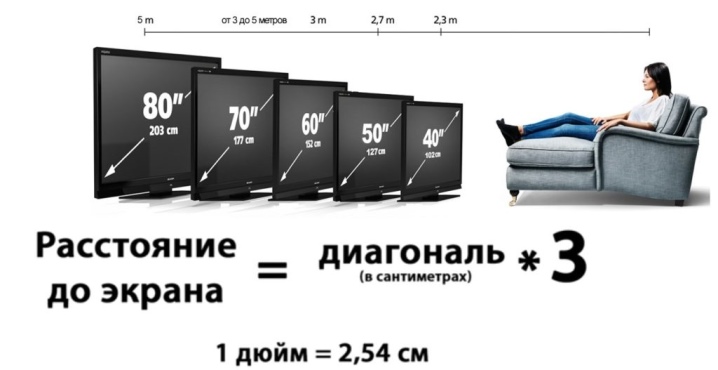
Is there a relationship between diagonal and screen resolution
The diagonal of the screen does not always affect the convenience of watching TV. Before buying, get acquainted with such a parameter as screen resolution. The image quality directly depends on the format. In this case, the clearer the screen is, the closer it can be placed to the viewing area. For example, if a 32-inch display has a resolution of 640 pixels, viewing will be comfortable from at least 2.5 meters. With the same screen size, but a higher resolution of 720 pixels, it will already be convenient to watch TV even from 1.9 meters.
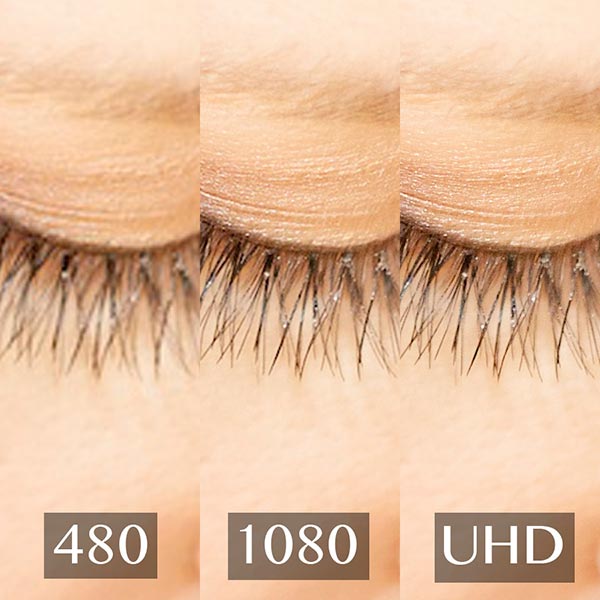
The resolution is measured in pixels, and the more there are, the better and better the picture.Every year manufacturers equip equipment with the latest technologies to ensure image quality.
| TV type | Resolution (pixels) |
| A TV with a regular screen. | CRT - 640x480 |
| Projection. | DLP - 1024x720. |
| Liquid crystal (LCD or LED). | HD-Ready - 1366 x 768;
Full HD - 1920 x 1080. |
| 4K TV or OLED. | 4R-Ultra HD - 3840x2160. |
Please note that 4K resolutions are only suitable for screens larger than 40 inches. On smaller models, you will not be able to reveal all the positive qualities of the format
It is also completely inappropriate to choose the maximum diagonal at the minimum resolution, since the image quality will be unsatisfactory.
Dependence on the area of the room

Everyone dreams of a huge TV, but not everyone understands that this is not only an extra waste of money, but also an awkwardly sized panel that does not fit into the dimensions of the room. To correctly determine the required screen sizes, it is necessary to clearly define for what purposes the device will be used. If this is the choice of a TV for the kitchen of 9 sq. m, the diagonal should not exceed 24 ”. The fact is that there is not much free space in such a room, and viewing is carried out from all its corners. Increasing the size of the screen will limit your movement and positioning of the device. The viewing comfort itself is also reduced. As for the room, the area of which exceeds 18 sq. meters, then any screen over 43 ”with 4k Ultra HD quality will do (such an extension has a sufficient number of 3840 * 2160 pixels so that you can comfortably look at the display from any distance). If the room is just huge, and the viewer is constantly in a certain place (bedroom or living room), then the following subheading will help you decide how to choose the diagonal of the TV depending on the distance to its screen.
What should be the distance to the TV screen?
First of all, you need to decide on the location of the TV model and where the viewer will be in relation to the screen. Next, you need to measure the distance between them. Based on the resulting figure, you can begin to calculate the required diagonal of the TV. Today there are many methods and various formulas for calculating this parameter. Each source has different information. To avoid unnecessary numbers and lengthy explanations about this, the specialists of the well-known Philips company give clear recommendations on how to choose the diagonal of the TV from the distance to it. See the table of values below:
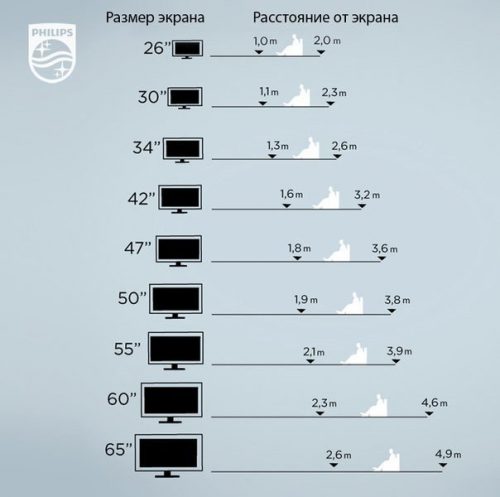
Viewing angle for comfortable viewing
All of the above parameters affect the so-called effect of the viewer's presence in the video being watched.
To achieve maximum efficiency in realism, it is important to correctly determine the required angle of view. All modern models have a sufficient viewing angle of 178 degrees and practically do not affect the size of the diagonal
Models with 3D technology have appeared on the current home appliance market, which means watching video with special glasses directly from the home TV screen. Each manufacturer has its own recommendations for installing such devices, so you will need to use the instructions attached to the device. But the fact that a 3D TV should be bought with a large screen is not discussed. Indeed, on a small display, you will not feel the special effects that are characteristic of films sharpened for three-dimensional graphics. Some models have advanced features that allow you to adjust the depth of the picture for each viewer individually.
A short video clip will tell you in detail about the choice of the diagonal:
Height from floor in living room
At what height to hang the TV in the hall depends on all of the above parameters:
- living room size;
- diagonal;
- image quality;
- the height of the sofa.
In addition, one should not forget - the whole family usually gathers in the central room of the house, viewing should be convenient from different places and angles.TV viewing time is also an important factor - the longer continuous use is expected, the clearer it is to calculate at what level to hang the TV. That is, in order to watch full-length films every evening with comfort, without strain on the eyes, the position must be calculated to the nearest centimeter.
Before fixing the TV, decide on its distance, distance from the floor: average height 80-120 cm, distance - 2-3 TV diagonals. Depending on the various parameters of the TV, room, people, some deviations are permissible.
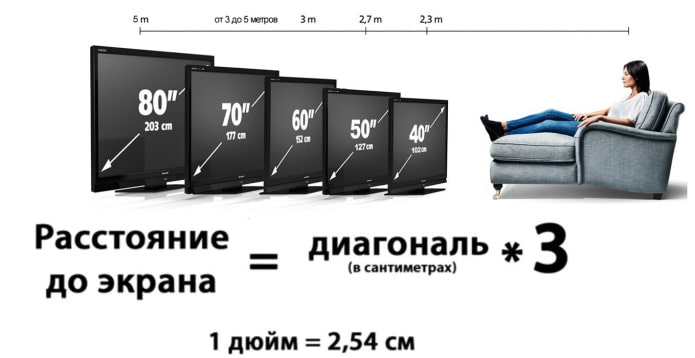
Advice! If you are planning to install a TV in a furniture niche, first decide on the level of placement. Only then order or buy a suitable model.
The place for installation does not have to be determined mathematically, try to go empirically. It is enough to listen to your feelings: sit on the sofa or armchair from where you plan to watch programs. Take the most comfortable position, cover your eyes. Open it, look at the wall - the bracket is hung in the place where you looked first. Such a simple exercise can be done by every adult and small family member, and after the mounting height is determined as the arithmetic average of the number of individual indicators.
The TV in the hall serves not only as a cinema. A common case is the use as a display for various consoles - PlayStation, Xbox, Nintendo. If you or your family members love to play, consider this fact before attaching the bracket. It is especially important to check the viewing angle, height, if the location of the players, the distance of the eyes from the screen differs from the usual posture when viewing.
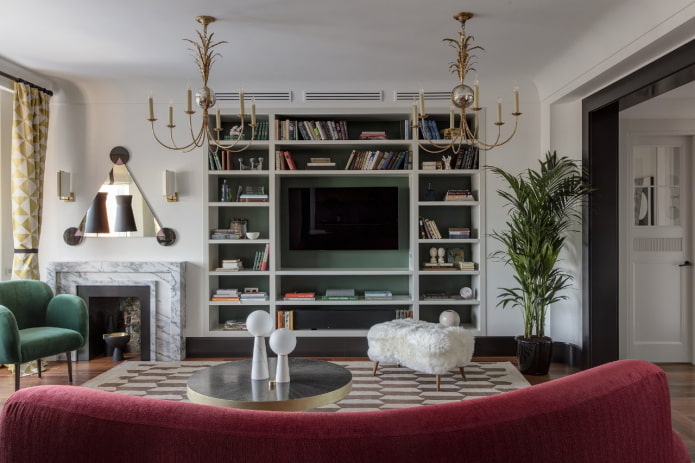

Digital tuners
What's the most important thing about TV? The component that makes it a TV is the TV tuner. In addition to the basic analog tuner, which is installed in all devices without exception and has been outdated for a hundred years due to the mediocre picture quality and the presence of interference, there are digital DVB tuners. They are subdivided into:
1. DVB-T and DVB-T2 - terrestrial television. The very same free TV that catches an indoor or outdoor antenna.
It's important to know! Since 2012, Russia has completely switched to DVB-T2 broadcasting, so if you are going to watch digital terrestrial channels, do not buy TVs without a DVB-T2 tuner. For some reason, such models are still found in stores.
Please check the specifications carefully before making your final purchase.
2. DVB-C and DVB-C2 - cable TV. Want more variety of channels that free TV cannot provide? You connect cable TV, insert the CI access card into a special slot and enjoy a hundred or two (depending on the cable company) channels (including paid ones, by subscription). All models with DVB-C / C2 tuners also have terrestrial DVB-T / T2, and such models are naturally more expensive. An excellent choice for city apartments. But not suitable for remote areas where cables are not laid.
3. DVB-S and DVB-S2 - satellite TV. If it is not possible to connect cable, and there are too few broadcasting channels, then buy a satellite dish with a subscription and an access card, connect it to the RF connector and get the coveted 200+ channels, regardless of the geographical location of the settlement.
TVs with DVB-S / S2 tuners are also good because an external satellite receiver is not required, which will take up space and one more outlet. TVs with DVB-S / S2 are equipped with other types of digital tuners - DVB-C / C2 and DVB-T / T2. Such models are more expensive, so if you are sure that you will not use satellite TV, then do not overpay.
The diagonal of the TV screen and the rules for its calculation
On sale you can find many models of TVs of different sizes - from small, with a diagonal of 26-32 inches, to huge ones with a diagonal of 180 inches - this is almost a full-fledged cinema. But bigger is not always better. When choosing the diagonal of your TV, consider the distance between the screen and the audience.The diagonal should be about 4 times smaller than this distance. For example, if only 2.5 meters separates the sofa from the TV in your apartment, choose a TV with a diagonal of 37-40 inches, 2.6-3 meters - 42-47 inches. And if this distance is more than 3 meters, you can purchase a model with a diagonal of 50 inches.
Panel thickness and weight
Manufacturers are striving to reduce the thickness and weight of TVs. This is justified - many people prefer to fix the TV on the wall so that it visually "merges" with it. Thin drywall partitions simply cannot support the weight of a massive panel. But if you plan to install the TV on a stand or cabinet, these parameters are practically irrelevant - the main thing is that the size of the stand corresponds to the size of the surface.
How to choose a TV based on room size
According to international measurement standards, the diagonal of the TV is always indicated in inches, which confuses some buyers.
The size of the diagonal, as well as the availability of additional functions, will affect the final cost.
When choosing a diagonal, you need to focus on the size of the room. As a rule, it is quite difficult to do this visually in stores due to the large retail space. To facilitate the task, you can measure the model you like with a tape measure and, when you come home, mark the dimensions at the place where the purchase is supposed to be placed.
Then you need to step back a few steps. The optimal distance is about three steps. This method will greatly facilitate the choice and will help to assess the real dimensions of the TV in a living room. Don't forget about the location. For example, when placed in a kitchen, conventional standards are not appropriate.
Many people confuse the real size of the TV receiver and its diagonal. The size also takes into account the frame, while the diagonal is calculated only from the matrix. Its size itself is indicated in the model name, these are the first two digits. It does not affect image quality. Responsible for the quality of the picture:
- screen format - 16: 9, 4: 3;
- what resolution the matrix has - 1366 x 768, 1920 x 1080, etc .;
- contrast value - the number of gigahertz;
- the quality of the matrix itself.
What should be the resolution?
Resolution is the number of pixels per unit area. The higher the resolution, the more detailed the picture will be. Almost all modern TVs support one of the two main formats - HD Ready HD Redi or Full HD Full HD ... However, an expensive new product has recently appeared - Ultra HD 4K. Ultra HD 4K .
HD Ready assumes 1280 x 720 ppi, and Full HD assumes 1920 x 1080. It is clear that Full HD is better, but this can only be appreciated if the screen is large enough - with a diagonal of up to 32 inches, both formats will look approximately the same, but if you want a large TV, then choose Full HD.
Ultra HD (4K) is a completely new format. It assumes a resolution of 3840x2160 dpi. These TVs give ultra-clear images even on very large screens. But there is one problem - there is still very little content of such high resolution. So you will have to watch mostly programs, films and TV series in normal quality. At the same time, there is no doubt that soon there will be much more content for Ultra HD.
How to display the formwork diagonal?
To simplify the construction of the correct formwork, I made the length of the walls absolutely equal. Therefore, the skew can only turn out in the form of a rhombus. The figure deliberately increased the degree of skewing of the formwork for clarity.
To remedy the situation, we did the following:
This combined movement of one of the sides of the formwork (north in the figure) was not too difficult, since the stakes and the original position of the formwork were in the correct position. Therefore, the displacement of the diagonal was minimal and efforts to "correct" the position of the shields did not cause mechanical stress and effort.
The method of setting angles along equal diagonals can be used only if the sides are equal. Equal diagonals
will be sufficient!
For large formwork sides it is possible to apply the golden triangle rule. If such a triangle, according to the Pythagorean theorem, has sides 3, 4, then the hypotenuse is 5 units. Thus, it is enough to measure on the sides of the formwork parts that are multiples of 3 and 4 at the top of the right angle, and then the distance between the control points will be 5 parts! This will guarantee right angles and equality of diagonals!
For proper planning formwork installation
I highly recommend using the cast-off method, which allows you to check the corners at any time during the installation work, remove and reinstall the foundation perimeter cords.
Before pouring the foundation, do not be too lazy to check the diagonals again. This will not be superfluous! Concrete cannot be fixed easily and quickly. It is very expensive and time-consuming to fix mistakes. The foundation for a log house has more quality requirements than the foundation for a stone house. Already nothing can be leveled with a solution!
Don't forget before pouring for easy dismantling!
Oddly enough, but absolutely all screens, starting with displays of monitors, smartphones and TVs, are usually counted in inches. Moreover, when assessing the size of the visible work area, it is the diagonal that is indicated, and not the width and height. We will tell you why this is so and what you need to consider when measuring the diagonal of the TV screen.
Today's TVs are getting bigger and thinner - there are already 65-inch models with a thickness of only 6 mm. They can even be hung on the wall as live wallpaper. The purpose of the device itself has also changed - now it is not just a window into the world of television, but also a whole media center with fantastic image quality, surpassing the picture and sound effects in a real cinema in color saturation and resolution.
 Xiaomi Mi TV 4 with a screen diagonal of 65 inches and a thickness of about 8 mm
Xiaomi Mi TV 4 with a screen diagonal of 65 inches and a thickness of about 8 mm
To understand whether it is possible to install a TV receiver of a certain size in your apartment, you need to know how the diagonal of the TV is measured. If you intend to find out what kind of TV you had in order to buy a substantially larger device, or vice versa, not much larger in size, but more modern, there are two ways to find out its dimensions.
In addition, if you buy a TV from someone else, it would be nice to know the exact size of the diagonal, because in this case, every inch counts.
The first way is to look at the back of your TV and find the model name and index. If you do not have the opportunity to do this, for example, the device is mounted on the wall, then you can look for the instructions for the TV receiver, on which the index will be indicated right on the cover. It is in it that the first digits indicate the screen diagonal, for example, Samsung UE43NU7100U - 43 inches.
You can also measure the size of the display using more traditional methods, namely with a tape measure, ruler, or a simple sheet of paper. But then you have to do some calculations, which means you need a pen.
 No matter how wild it sounds, but modern TVs have become so huge that a meter (tailor's) ruler may not be enough to measure the diagonal. Therefore, it is better to immediately take care of a 3 or 5 meter tape measure. If you do not have this common tool at hand, you can also use a thread, which can then be measured with a drawing ruler. But the thread can stretch, so that in this case, an error of half an inch cannot be avoided.
No matter how wild it sounds, but modern TVs have become so huge that a meter (tailor's) ruler may not be enough to measure the diagonal. Therefore, it is better to immediately take care of a 3 or 5 meter tape measure. If you do not have this common tool at hand, you can also use a thread, which can then be measured with a drawing ruler. But the thread can stretch, so that in this case, an error of half an inch cannot be avoided.
TV size selection rules
Choosing a TV, the buyer needs to take into account many parameters, ranging from the diagonal with the screen resolution and ending with the dimensions of the room. But first of all the height and width of the place where the television panel will be located, and the distance to the audience are measured
... These parameters are relative, and other factors depend on the characteristics of the TV itself.
Depending on the aspect ratio
Screen standard - this is the ratio of the width and height of the television panel
... At the dawn of cinematography, there was a single standard - 4: 3, i.e. the image was almost square. With the advent of digital television, analogue television has been replaced by a new widescreen standard - 16: 9, i.e. the screen has become elongated in width. This allows the viewer to enjoy the movie more by increasing the image area.
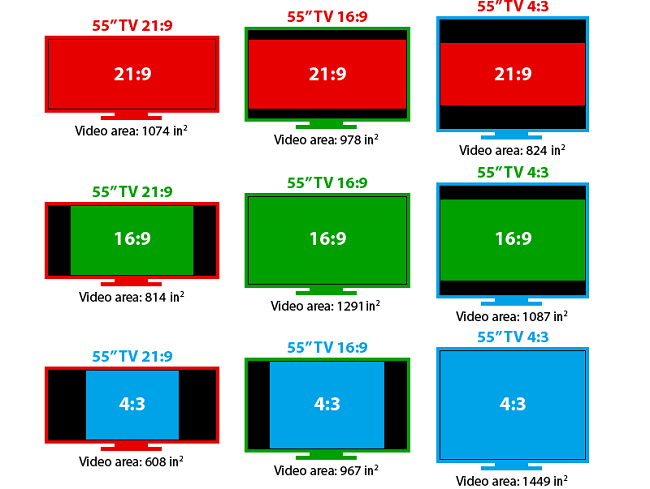
The optimal viewing distance is selected depending on the format.
Thus, the optimal viewing distance for a 42-inch widescreen TV is 2.5-3 meters. A 55-inch screen will be clearly visible from about 4 meters, and for 32 inches or 81 cm - 2-2.5 m.
Depending on the resolution
The next parameter to look out for when choosing a TV is screen resolution. The lower the resolution of the signal supplied to the panel, the smaller the diagonal of the TV should be selected.
Otherwise, the user will see a blurry image
with a lot of defects and imperfections.

So, the above recommendations for the distance to TV equipment, depending on the screen format, are based on calculations for a minimum signal resolution of 720x576 pixels. If the image is broadcast with a resolution of 1280x720 ppi, then the distance to the viewer is 2.3 diagonal values, at 1920x1080 ppi - 1.56, and with an Ultra HD picture quality - 0.7. Thus, for a TV with a diagonal size of 100 cm and a resolution of 1920 x 1080 ppi, viewers are recommended to be at a distance of 1 meter 56 centimeters from it. And at 120 cm and Ultra HD quality, you can watch programs from just 86 centimeters.
Depending on the size of the room
Another important parameter that you should pay attention to is the size of the room. For small rooms, you need to choose a TV panel with a small diagonal and vice versa.
If you incorrectly calculate the area of the room and purchase equipment larger than the recommended size, a person will experience discomfort, not pleasure, when viewing. Firstly, the viewer, being close to the screen, will see all the image defects, which is especially important with a weak signal. Second, a short distance will cause significant eye strain
, and regular viewing from such a distance will cause impaired vision.
You also need to take into account that large equipment will look out of place in a small room, and the owner, sitting close, will not be able to fully cover the screen. It is worth understanding what is right it is very difficult to determine the appropriate dimensions of the equipment in the store
... Typically, sales areas are large and TV sets appear small. Whereas in a home environment, such a device will turn out to be huge.
Advice! In order not to get into a mess, it is better to check the dimensions of the TV model you like. To do this, you need to measure the length and width of the equipment and compare these dimensions with the possibilities of the place that is determined for the panel.
Depending on the distance to TV
In order, without bothering with calculations, to choose the correct diagonal of the television panel, which will allow you to watch films and programs without defects in picture quality, completely cover the screen with a gaze and protect your eyes from unnecessary load, the distance will be given in the table depending on the values of the diagonals and the resolution of the TV signal.
| Inches / Centimeters Pixels |
32/81 |
37/93 |
40/101 |
42/106 |
50/127 |
52/132 |
|
625 |
250 cm | 310 cm | 330 cm | 340 cm | 400 cm | 420 cm |
|
720 |
190 cm | 220 cm | 240 cm | 250 cm | 300 cm | 310 cm |
|
1080 |
130 cm | 150 cm | 160 cm | 170 cm | 200 cm | 220 cm |
|
2160 |
80 cm | 90 cm | 100 cm | 120 cm | 150 cm | 170 cm |
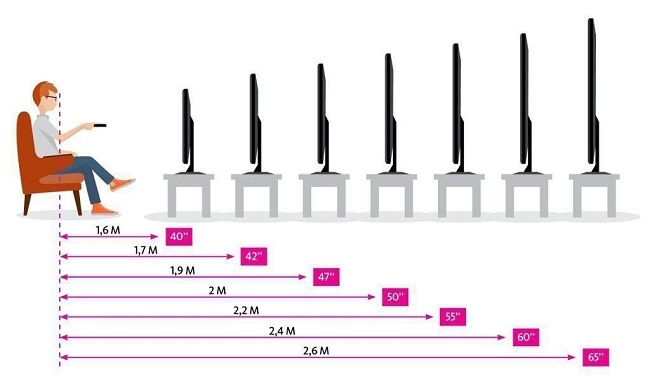
Other factors
In order to calculate in advance and determine the dimensions of the television panel, you should also take into account the content that you plan to watch. So, if the focus is on movies, you can get a slightly larger TV.
than the distance allows
Thus, sitting in front of a large screen, the user can experience an effect similar to watching a movie in a cinema.
If you plan to watch educational programs, news or sports TV channels, you should not buy large equipment, otherwise a person will not be able to fully capture the image
and will miss out on some of the information.
Complex geometry
You can also measure the diagonal of a TV in cm using a simple school method, knowing the length and height of the visible area of the screen. The measurement process itself is somewhat simpler than the diagonal, because you are dealing with real objects - horizontal and vertical straight edge of the display. Do this with a tape measure or ruler. Moreover, you can use a short ruler by applying it sequentially, making small risks with a pencil.
So, you got the numbers horizontally, for example, 75 and vertical 35. The squares of these numbers are 5 625 and 1 225. Many people cannot do without a calculator). And the sum of the squares is 6 850. It remains only to take the root from it. We get the figure 82.7 cm. Divide it by the size of an inch - 2.54 and we get 32.58. Yes, the diagonal of the TV is just over 32 inches.
By the way, if you don't have a calculator at hand (oh, now it is in every smartphone and certainly in any Windows on a PC), we suggest using a convenient online service that will quickly calculate the diagonal itself if you specify the width and height of the display in the appropriate fields.
The relationship of the diagonal with the size of the TV
The diagonal of the TV is directly dependent on its size
: the higher the number, the wider and wider the TV panel is
The standard values for heights and widths depending on the diagonal are shown in the table below (but note that the dimensions indicated refer directly to the screen)
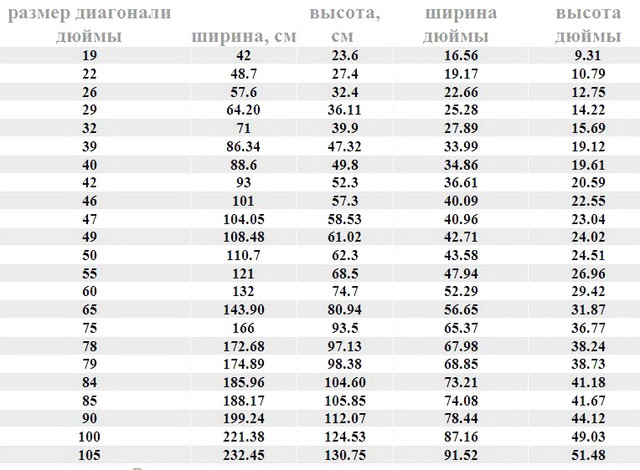
As for the dimensions of the TV itself, they can be calculated by adding up similar screen parameters with a frame around it
(that is, width with width, height with height). And then some users, deciding to measure the diagonal with a tape measure, are surprised when they receive numbers that do not correspond to those stated in the TV data sheet.
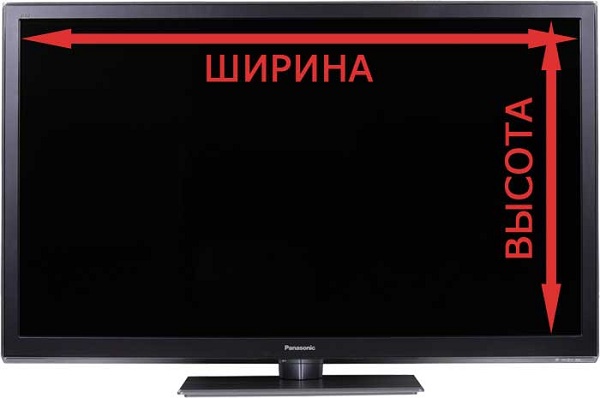
The fact that the distance between opposite corners is used as a standard for measuring the size of a TV has a certain explanation. Firstly, when selling television equipment, it is easier to use and remember one number than two (width and height), and secondly, even having the same diagonal, different devices may differ in size,
because the TV frame may have different thickness depending on the model and manufacturer.
Reasons for measuring diagonals in inches
An inch is called a unit of measurement in the English metric system, and its use when designating the screen size of modern plasma or LCD TVs is explained by the fact that the bulk of television equipment is produced by foreign brands (Philips, Samsung, Sony, Panasonic, LG, etc.)
... In the USSR, most TV receivers were made by domestic manufacturers, and the diagonal was determined in centimeters.
To understand how much the screen size will be in centimeters, despite the fact that the corresponding parameter is indicated on the price tag in inches, you can translate these numbers using a calculator. To do this, you need to find out how many cm is 1 inch.
But if the desired diagonal has already been determined in centimeters, and you need to select a model with the required size in inches, then you can manually perform the opposite steps (divide by 2.54) or use the table below.
| Cm | 48 | 55 | 60 | 71 | 81 | 102 | 107 | 109 | 125 | 127 | 152 | 165 | 203 |
| Inches | 19 | 22 | 24 | 28 | 32 | 40 | 42 | 43 | 49 | 50 | 60 | 65 | 80 |
How to measure the diagonal of your TV
 Unroll the tape measure from one corner of the screen (its visible area, do not take into account the body) to the other and try to keep the tape stretched along its entire length. Secure the tape with a stopper and record the measured value. If you made measurements with a thread, cut it off when your finger reaches the corner of the screen and measure the resulting length with a ruler.
Unroll the tape measure from one corner of the screen (its visible area, do not take into account the body) to the other and try to keep the tape stretched along its entire length. Secure the tape with a stopper and record the measured value. If you made measurements with a thread, cut it off when your finger reaches the corner of the screen and measure the resulting length with a ruler.
Thus, we got the result in centimeters and even in millimeters.And the diagonal of displays, as is customary all over the world, is measured in inches. So you have to convert centimeters to inches. Grab a pen and get ready to squirt.
One inch equals 2.54 centimeters. Therefore, the result obtained and recorded by you in centimeters must be divided by 2.54. For example, divide 82 cm by 2.54. It turns out 32.28. We round down, which means that the diagonal of your TV is 32 inches.
You can ignore the remaining tail - the manufacturer may not indicate the exact size of the screen to simplify the documentation, or vice versa, as is customary in computer monitors, indicate the diagonal with tenths, for example, 24.3 inches or even with hundredths, if we are talking about a smartphone screen - 6.21 inch

